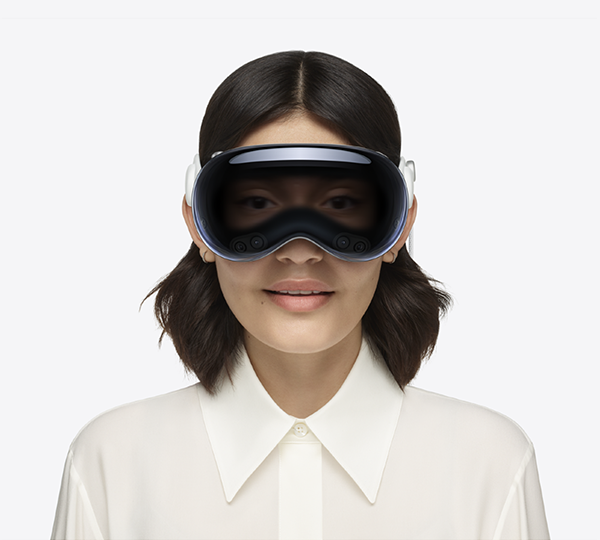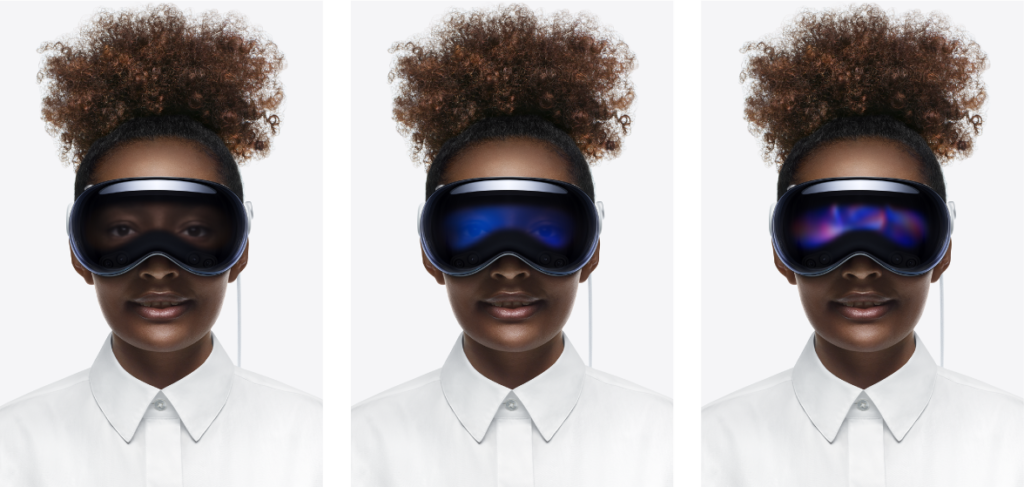
Introduction
Apple’s Vision Pro introduces several bold features—but none has sparked more debate than EyeSight. So, what is EyeSight on Vision Pro, and is it truly the game-changer Apple claimed?
In this article, we explain how EyeSight works, what it does well, and where it falls short. If you’re thinking about buying the Vision Pro, this is the honest breakdown you need.
What Is EyeSight?
EyeSight is a front-facing feature on the Vision Pro headset that shows a digital image of your eyes to people around you. The goal is to make face-to-face interaction feel more natural—even while you’re wearing a headset.
Instead of hiding behind a screen like most VR users, Vision Pro wearers project a 3D simulation of their eyes on an external OLED display.
How Does It Work?
- Vision Pro tracks your real eye movement using internal cameras.
- A curved outward-facing display shows a digital recreation of your eyes.
- The image adjusts in real time to reflect your expressions, blinks, and gaze direction.
The result is that bystanders get a sense of your focus, attention, and emotional state—even if only digitally.
What EyeSight Shows Based on Your Activity

Apple designed EyeSight to change based on how immersed you are:
- In mixed reality mode, your digital eyes are visible and animated.
- In semi-immersive mode, like web browsing, the display becomes frosted, indicating you’re less aware of the real world.
- In full immersive mode, the display shows an opaque effect, indicating you’re not aware of the real world. This could happen during movie playback.
It’s meant to offer non-verbal signals to those around you, without needing to speak or remove the headset.
Why Apple Created It
EyeSight responds to a major criticism of headsets: that they disconnect users from the people physically near them. Apple’s answer was to reinforce social presence, allowing others to see your “face” instead of a black visor.
This aligns with Apple’s vision of spatial computing as a shared experience, not just a solitary one.
The Problems with EyeSight
While the concept is promising, EyeSight doesn’t work as well as Apple originally suggested in its marketing.
Here’s where it falls short:
- The digital eyes look artificial. Even though they reflect your movement, they don’t truly look like you. Some users describe them as “lifeless” or “creepy.”
- Poor visibility in bright environments. The external display is difficult to see in well-lit rooms, which defeats the purpose of visibility.
- It doesn’t support true eye contact. The image is flat and doesn’t align perfectly with your actual gaze, making it feel uncanny.
Despite Apple’s impressive promotional videos, the real-world experience of EyeSight is still limited and inconsistent.
Is EyeSight Useful or Just a Gimmick?
That depends on your expectations. For now, EyeSight is:
- A creative solution to a real UX problem: how to keep humans visible while using a headset
- Technologically impressive, but still far from natural
- More of a social signal than a replacement for genuine interaction
Apple clearly sees EyeSight as part of its long-term strategy—but in its current form, it feels more like a version 1.0 with room to improve.
Conclusion
So, what is EyeSight on Vision Pro? It’s Apple’s attempt to reduce social isolation in headset use by showing a digital version of your eyes. While innovative, it doesn’t quite live up to expectations—yet.
If you’re expecting natural eye contact and lifelike realism, you’ll likely be disappointed. But if you appreciate the direction Apple is heading, EyeSight is still a bold step forward in human-centered spatial computing.
